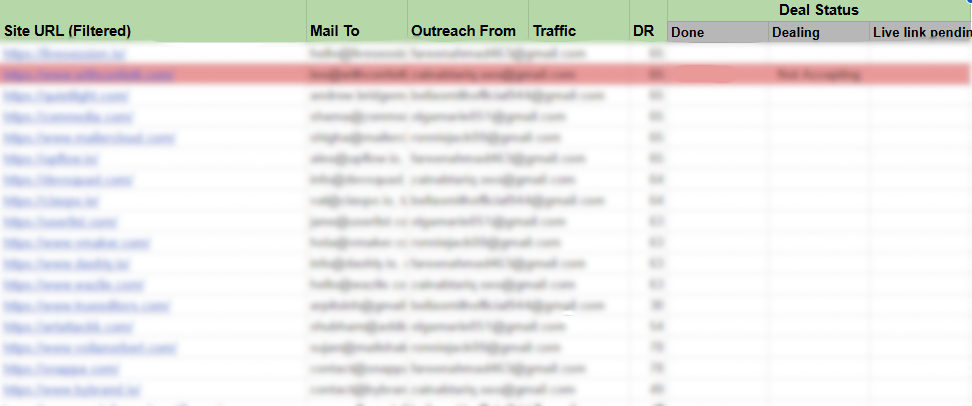Effective backlink management is vital for SEO professionals aiming for consistent and organized link-building efforts.
Properly managing backlink data ensures that past work remains accessible, saving time during audits and planning future strategies.
Here’s a comprehensive guide on managing your backlink data for optimal long-term benefits.
Table of Contents
Why Managing Backlink Data Matters
A well-organized backlink database improves SEO outcomes by allowing you to track your efforts, streamline outreach, and monitor link performance.
Without a structured approach, your data can become fragmented, leading to lost opportunities and inefficiencies during future audits.
By following a consistent method, you can gain clear insights and make informed decisions to boost your link-building strategy.
How I Manage My Data
My approach to data management begins with creating an Excel or Google Sheet to log each detail of the backlinks I build.
Here’s how I structure my sheet:
- A1: Domain/Website URL – The website you’re building the link on.
- B1: Traffic (Ahrefs) – Estimated traffic to gauge site value.
- C1: Domain Rating (Ahrefs) – Domain authority metric for quality check.
- D1: Contact Email – Outreach point of contact.
- E1: Outreach Platform – The platform (e.g., LinkedIn, direct email) where outreach was initiated.
- F1: Response Platform – The platform where you received a response.
- G1: Deal Status – Current status of the link-building process.
- H1: Deal Done – Confirmation if the deal is completed.
- I1: Asking Price – Initial price quoted.
- J1: Confirmed Price – Final negotiated price.
- K1: Live Link Status – Status of the link (e.g., pending or live).
- L1: Link Index – Indicates if the link is indexed.
- M1: Link Exchange/Content Exchange – Type of collaboration.
- N1: Website Niche – Industry/category for easy filtering.

Additionally, I use Gmail tags to organize communication. For instance, I tag emails related to ongoing deals as “Dealing” and completed ones as “Deal Done.” This simple tagging system keeps email tracking seamless.
5 Powerful Tips to Manage Your Backlink Data
- Create Structured Sheets with Clear Headings
Use consistent headings and columns in your sheet for easy reference and updates. This helps in quickly locating essential information.
- Regular Updates and Validation
Make it a habit to review your sheet periodically to ensure all data is current and accurate. This minimizes errors and enhances the reliability of your records.
- Utilize Tagging in Your Email
Implement a tag-based system in your Gmail or email client to organize communication with prospects. Tags like “Deal Ongoing” and “Deal Done” simplify tracking and prevent overlooked responses.

- Leverage Automation Tools
Use tools like Zapier to automate data entry or link updates from emails to your sheet. This reduces manual work and keeps your database fresh.
- Maintain Backups and Notes
Store backups of your sheets in cloud services like Google Drive. Add notes to columns for specific context, such as unique requirements or changes in negotiation.
Conclusion
Effectively managing your backlink data is essential for achieving long-term SEO success. A structured approach not only simplifies future audits but also provides clarity on your link-building progress.
By maintaining organized records and leveraging tools for efficiency, you can streamline your outreach and ensure sustainable SEO results.
FAQs
1. Why is it important to manage backlink data?
Managing backlink data ensures that you can track your efforts, evaluate their impact, and maintain organized records for future SEO strategies.
2. What are the best tools for managing backlink data?
Google Sheets, Excel, and email tagging systems like Gmail work well. Automation tools like Zapier can enhance efficiency.
3. How often should I update my backlink data?
It’s advisable to update your sheet at least once a week or after completing major outreach campaigns to keep data accurate.
4. Can I use CRM tools for managing backlinks?
Yes, CRM tools like HubSpot or specialized link-building software can be used for advanced tracking and communication.
Following these tips will set you up for efficient backlink management that supports long-term SEO success.

Leave a Reply